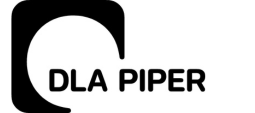As of 2025, the Hungarian Tax Authority (NAV) has established specialized transfer pricing expert departments, indicating an increased focus and scrutiny on transactions between affiliated companies. The three new departments are located in Budapest and in the eastern and western parts of Hungary (one in each region) and have special competence regarding the complex transaction between affiliated parties within Hungary or cross-border alike.
Background
The emergence of global supply and value chains and the expansion of activities of multinational enterprises have increased the significance of intra-firm trade flows. Despite growing attention from policymakers, little and incomplete data are collected on trade transactions between related parties. Available evidence suggests that intra-firm trade represents a significant share – some imply that it already exceeds traditional, ‘inter-company’ transactions - of world trade but varies widely across countries and industries. What is clear, that the importance, including tax implications, of transactions amongst related parties cannot be overstated and overlooked.
Transfer pricing obligations
Businesses classified as at least medium-sized enterprises (not SMEs) that engage in transactions over HUF 100 million with related parties within a fiscal year are required to prepare transfer pricing documentation. Since 2018 the multi-level documentation consists of a master file, the local file and – for companies with group level turnover over EUR 750 million – also the country-by-country report (CbCr). This documentation needs to be completed by the submission date of the corporate tax return, i.e. no later than May 31 and is required to substantiate that intra-group transactions were conducted at arm’s length; otherwise, tax base adjustments are required.
Incompliance with transfer pricing documentation rules triggers a default penalty up to HUF 5 million, with repeated offenses attracting penalties up to HUF 10 million. Furthermore, lack of tax base adjustments (where applicable) or incorrect application thereof might also lead to tax shortage, along with additional tax penalties and late payment interest. It has been reported that the amount of tax base corrections due to transfer pricing exceeded HUF 100 billion in 2024, the tax authority established a corresponding tax shortage of nearly HUF 8 billion and imposed default fines of nearly HUF 100 million (it shows a firm, almost exponential increase compared to the previous year).
In addition since 2022, the transfer pricing data provision obligation has also been introduced. Detailed data (partners, values, methodology) needs to be provided to the tax authority with regard to transfer pricing, while non-compliance with the reporting obligation may lead to the imposition of a default penalty of up to HUF 1 million. The tax authority uses the data collected for risk analysis, selection of taxpayers for audits and to obtain a comprehensive picture of related party transactions before the audit is initiated.
Transfer pricing in 2025
Starting in 2025, a new type of audit has been introduced to more effectively ensure compliance with transfer pricing regulations. These are known as transfer pricing-specific compliance audits, and their duration has been extended from 30 to 60 days. This allows NAV to conduct more thorough and detailed examinations.
A major organizational restructuring within NAV has also taken place, leading to the creation of specialized transfer pricing expert departments. These teams are tasked with handling the increasing number and complexity of audits and enhancing the authority’s technical expertise. The main focus areas of the audits remain unchanged: high-risk taxpayers, loss-making manufacturing companies, financial transactions and transactions involving intangible assets. However, there are new priorities in 2025: NAV will pay special attention to loss-making distributors and companies in the food industry. In addition, taxpayers identified as high-risk based on their transfer pricing data reporting should also expect targeted audits.
By Balint Zsoldos, Head of Tax, KCG Partners Law Firm




